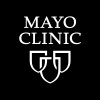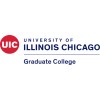
Positron Emission Tomography (PET) Imaging of Cholesterol Trafficking: Clinical Evaluation of [18F]FNP-59...
RadiotracerHypertension1 moreThis exploratory, first-in-man, phase 0 study will evaluate the feasibility of using a sub-therapeutic dose of a fluorine-18 analogue of NP-59 ([18F]FNP-59) to image the adrenal gland in healthy normal subjects. The researchers believe that [18F]FNP-59 would greatly improve the imaging characteristics, by providing a PET imaging cholesterol analogue with significantly improved radiation dosimetry.

Pharmacokinetics, Pharmacodynamics, and Safety Profile of Understudied Drugs Administered to Children...
Coronavirus Infection (COVID-19)Pulmonary Arterial Hypertension23 moreThe study investigators are interested in learning more about how drugs, that are given to children by their health care provider, act in the bodies of children and young adults in hopes to find the most safe and effective dose for children. The primary objective of this study is to evaluate the PK of understudied drugs currently being administered to children per SOC as prescribed by their treating provider.

China Stroke Primary Prevention Trial for Subjects With H-type Hypertension and MTHFR 677 CC/CT...
HypertensionThis is a multicenter, randomized, controlled, clinical trial stratified by participants with the MTHFR 677 genotype (CC and CT) in a 1:1 ratio. It aims to investigate the treatment effects of amlodipine folic acid vs. amlodipine on reducing the risk of first ischemic stroke among those participants with the MTHFR 677 CC/CT genotype and H-type hypertension (hypertension with increasing homocysteine (Hcy)). This study consists of 3 phases: Screening, Run-in period (0 or 2 weeks), and randomized treatment (5 years), with a prospective, randomized, open-label, blinded end-point design.

The Effect of Monitoring PVP on Clinical Outcomes in Patients With PH
Portal HypertensionThe complications associated with portal hypertension in cirrhosis are the main cause of death in patients with cirrhosis. The level of portal venous pressure is closely related to the prognosis of patients. HVPG (hepatic venous pressure gradient) is the "gold standard" for predicting portal venous pressure and an important indicator for evaluating the efficacy of NSBBS. However, monitoring HVPG has many limitations,and the clinical application is also limited to a certain extent. Therefore, this study intends to clarify the guiding value of monitoring portal venous pressure in the clinical diagnosis and treatment of portal hypertension patients through a single-center, prospective and observational study. Therefore, this study intends to clarify the guiding value of monitoring portal venous pressure in the clinical diagnosis and treatment of portal hypertension patients through a single-center, prospective and observational study. At the same time, to explore the correlation between HVPG and PPG in cirrhosis patients at different stages and different etiologies, and to evaluate the role of spleen stiffness in predicting the severity of esophageal and gastric varices in patients with portal hypertension, and to find biomarkers to predict the risk of complications related to portal hypertension.

Use of an Innovative Mobile Health Intervention to Improve Hypertension Among African-Americans...
High Blood PressureThe project objective is to test the feasibility of delivering health education and self-management support to African-American patients with uncontrolled hypertension (HTN) through a culturally-tailored smartphone application (app)-enhanced intervention within federally qualified health centers.

Medication Reconciliation in Pulmonary Hypertension
Pulmonary HypertensionPulmonary Hypertension Chronic Thromboembolic1 morePulmonary hypertension (PH) is a life threatening condition. In PH, pulmonary arterial hypertension (PAH) and chronic thrombo-embolic chronic pulmonary hypertension (CTEPH) are two rare diseases requiring specific and complex drug management. In France ,a part of these treatments ,only available in hospital pharmacies, are generally unknown from community health care professionals despite the high risk of drug-interactions and side effects. Anticipating medication errors at the begging of the disease is therefore important, and could be done through medication reconciliation.

TIPS Plus Transvenous Obliteration for Gastric Varices
CirrhosisLiver5 moreVariceal hemorrhage (VH) from gastric varices (GVs) results in significant morbidity and mortality among patients with liver cirrhosis. In cases of acute bleeding, refractory bleeding, or high risk GVs, the transjugular intrahepatic portosystemic shunt (TIPS) creation and transvenous variceal obliteration procedures have used to treat GVs. While these techniques are effective, each is associated with limitations, including non-trivial rebleeding and hepatic encephalopathy rates for TIPS and aggravation of esophageal varices, development of new or worsening ascites, and formation of difficult to treat ectopic varices for transvenous obliteration. Increasingly, however, TIPS and transvenous obliteration are viewed as complimentary procedures that can be combined to reduce bleeding risk and ameliorate sequelae of portal hypertension. Yet, despite a strong mechanistic basis for their combination, there are few studies investigating the combined effectiveness of TIPS plus transvenous obliteration. Thus, the aim of this single center prospective pilot study is to assess the effectiveness and safety of combined TIPS creation plus transvenous obliteration for the treatment of GVs, with the overall goal of improving the clinical outcomes of patients with VH related to GVs. The work proposed could lead to important advances in the treatment of bleeding complications due to liver cirrhosis.

CHACO Study: Control of Arterial Hypertension in Colombian Patients
HypertensionEpidemiological study (cross-sectional study) in order to determine the patients who present an adequate control of the Blood Pressure (BP), in a population of Colombian patients diagnosed with Arterial Hypertension (AH) and who are under pharmacological treatment.

Acute Hemodynamic Response to Carvedilol in Children With Clinically Significant Portal Hypertension....
Portal HypertensionClinically significant portal hypertension (CSPH) is defined as Hepatic Venous Pressure gradient (HVPG) >10 mmHg. Patients with CSPH are at risk of developing esophageal varices and clinical decompensation (variceal bleeding, ascites, jaundice, encephalopathy), which mark the transition from compensated stage to a stage of the disease (decompensated) associated with higher mortality. HVPG is calculated by subtracting the free hepatic venous pressure (FHVP), a measure of systemic pressure, from the wedged hepatic venous pressure (WHVP), a measure of hepatic sinusoidal pressure. HVPG is surrogate marker in many clinical applications such as gold standard test to evaluate presence and severity of portal hypertension (PHT) diagnosis, risk stratification, monitoring of the patients on beta blockers. Non-selective beta-blockers like propranolol and carvedilol are indicated in adults for primary and secondary prophylaxis of variceal hemorrhage. Acute hemodynamic response to intravenous propranolol with HVPG values coming down to < 12 mm Hg or reduction to >20% from baseline have been shown to be associated with reduced long-term risk of variceal bleed. Portal Hypertension in biliary atresia (BA) occurs early and is due to recurrent cholangitis and portal sclerosis. HVPG in children is feasible and safe in children according to previous studies, however, there are no recommendations to suggest beta-blockers based on HVPG reduction in children. Hence, we are planning the current work to study the acute hemodynamic response to carvedilol in children with CSPH, and to compare the HVPG values in children with chronic liver disease.

A Study to Test Whether BI 685509 Helps People With Liver Cirrhosis and High Blood Pressure in the...
HypertensionPortal1 moreThis study is open to adults with advanced liver cirrhosis caused by hepatitis B, hepatitis C, alcohol-related liver disease, non-alcoholic steatohepatitis or other causes. People can join the study if they have high blood pressure in the portal vein (main vessel going to the liver) and bleeding in the esophagus or fluid accumulation in the belly. The purpose of this study is to find out whether a medicine called BI 685509 helps people with this condition. Participants are put into 2 groups by chance. One group takes BI 685509 tablets and the other group takes placebo tablets. Placebo tablets look like BI 685509 tablets but do not contain any medicine. Participants take a tablet twice a day for 8 weeks. Participants are in the study for 2 to 3 months. During this time, they visit the study site regularly. At 2 of the visits, the doctors check the pressure in the liver vein by inserting a catheter (a long thin tube) that gives information about pressure in the portal vein. The change in blood pressure is then compared between the 2 groups to see whether the treatment works. The doctors also regularly check participants' health and take note of any unwanted effects.
